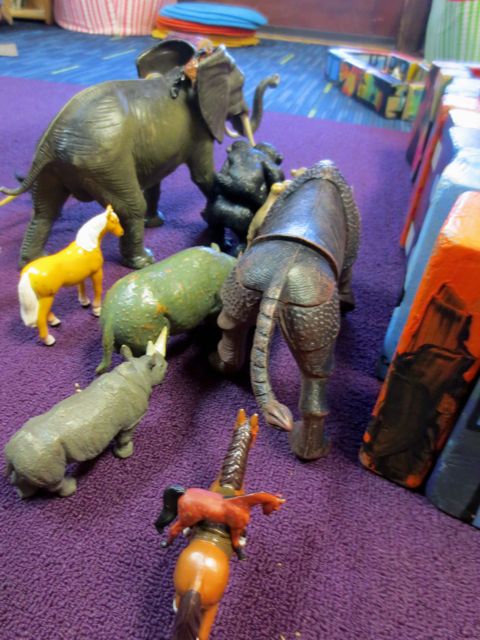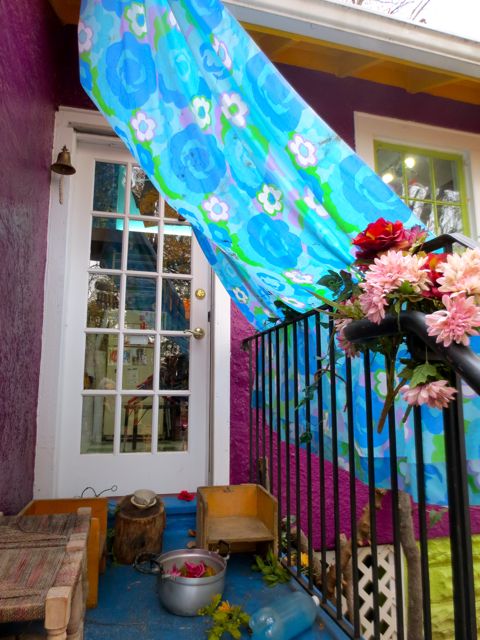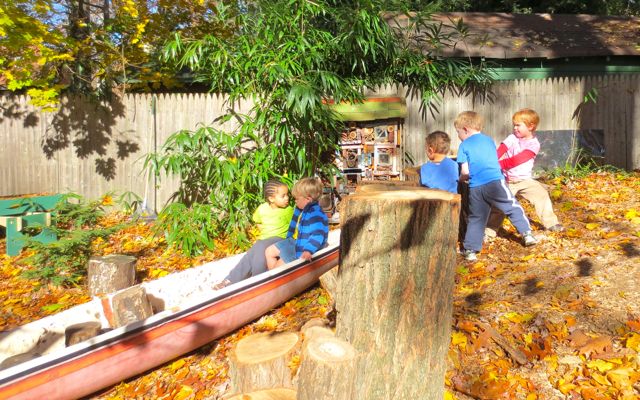We Would Be a Whole Fleet of Helicopters
Besides Lev Vygotsky, Vivian Gussin Paley, and our mission statement, the quote, "Rather than getting children ready for school, we need to get school ready for them" from Docia Zavitkovsky helps ground our practice. 
This means that when something is not working with a child or a group of children, we will not just continue as planned and shrug our shoulders. Or perhaps it is better to say, we plan for change. We look to see how the environment can be changed. We look for how we can bring in different supports, with interactions or with materials. We up our training game. Our internal communications and evening training sessions shift focus.
We are a parent cooperative and this means that parents are part of our teaching team. Our teaching team updates are sent out each week electronically in posts which we call our "week in reviews" and we hold monthly meetings which feature relevant training topics along with discussions about running the business of the school.
We don't just train parents, but also children. Children are our best option for modeling and support. They care about their peers in a way that we must celebrate. We review the literature to find out if we are on the right path (action research is our friend). We bring in outside resources including therapists and special educators.
Our business as usual is hardly humdrum. It is dynamic, fast-moving, joyful and challenging in equal measures.
The only thing we are truly locked into is doing the best we can -- and with a group of parents and teachers that all really care -- we are quite a capable crew. Well, doing the best we can and keeping the hours we have set out as our school day/sessions. And that. That is kind of important.
So this is what we did when we began to explore options for whole class change. We wanted to increase opportunities for cooperative play skills and self-regulation related to social play on a large scale. Interestingly, the class as a whole followed teacher-led activities during music class, circle, and story time with nary a hiccup. It was during play that things became fuzzy and stressful for many of the children.
We hold with the knowledge that we can teach internally motivated self regulation by making room for children to take physical risk and through dramatic play. How could we make these things more intriguing, flexible, and less overwhelming for the children who needed to practice this important skill?
Our research began a few weeks ago with a trip to the forest. The best way that I could describe what I was looking to do is that I wanted the children to see each other, to truly connect, so that they could work together to accomplish small and great things. We have a group of individuals working independently of each other. We need cohesion, community, and sure, over time the children may have developed it independently of our interventions with just our usual supports, but I found that our usual supports were not the best we could do.
The next thing we did was changed our arrival routine. We not only play outside at the end of the day in this class, we began meeting outside in the morning. Some children still need the quiet and small transition that the inside rooms offer them so we built The Blue House for those children.
Our playground offers just the right amount of risky play and dramatic play destinations. It was our job to steer the children gently towards enriched play. First we removed the trucks and then the large shovels. We purposefully turned the children's eyes to other play destinations and adventures.
Now we will work to increase both our understanding of and opportunities for dramatic play, because after all, dramatic play will absolutely bring cohesion in both the individual and the group. Dramatic play can roll out as independent, small world play, or it can involve small and large groups of children and in every case it begins with, "Pretend I am..." I shared this information in the parent blog.
For this, we will need to visit and revisit story. As luck would have it, this was exactly what the closing session of the NAEYC conference was about, so I left the conference reassured that I was on the right track. Trisha Lee of Makebelieve Arts reminded me about the why of our children's journals. I went right home and picked up my dog-eared copy of The Boy Who Would be a Helicopter and began to re-read it.
Risky play, outdoor adventures, and enriched dramatic play...their play is just about to soar!



